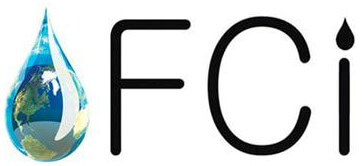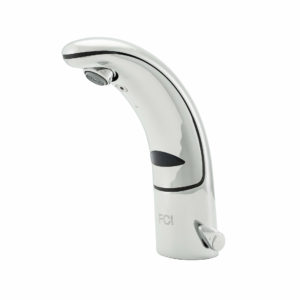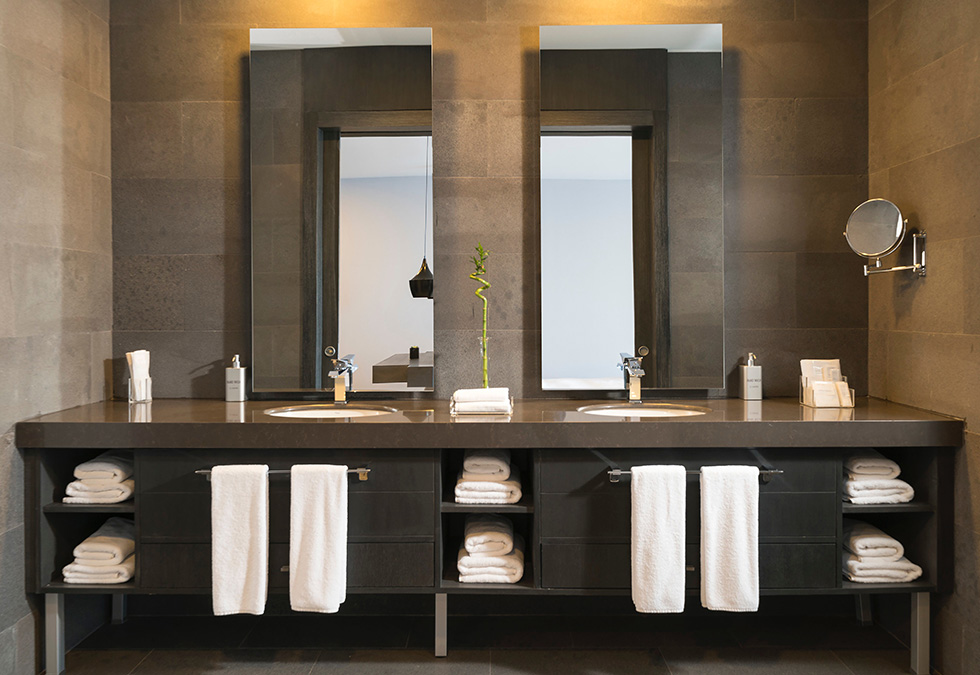Summary: Commercial touchless faucets should be on every facility owner’s radar. They help reduce the risk of spreading germs to reduce sick days which can interfere with productivity. They also help conserve water. You can use touchless faucets to reduce water costs, show a sense of social responsibility, make customers and staff feel safer and reduce washroom maintenance.
Table of Contents
- Introduction
- What are Commercial Touchless Faucets?
- Reduced Water Costs
- Social Responsibility
- Supporting Disabilities
- Reduce Spread of Illness
- Reduced Maintenance
- State of the Art Technology
- Leading Edge
- Employee Appreciation
- Where to Install Commercial Touchless Faucets
- Some Considerations When Switching to Commercial Touchless Faucet
If the pandemic has taught facility owners and managers anything, it’s that the spread of viruses can cripple your workforce. Even looking back on a typical cold and flu season, the spread of germs can reduce your team numbers and in turn impact productivity and revenue.
However, COVID protocols taught us what a difference something as simple as handwashing can make to greatly reduce the spread of germs. If you are looking for ways to reduce sick days while also keeping your facility safe, commercial touchless faucets should be on your radar.
Here are the many benefits of commercial touchless faucets for facilities.
What are Commercial Touchless Faucets?
Commercial touchless faucets provide an added level of hygiene to reduce the spread of germs at your facility. The technology uses motions sensors allowing users to simply wave their hands to trigger the water to turn on. The faucet automatically turns off after an adjustable amount of time, or when the movement ceases. This reduces water waste. There are many ways businesses can benefit from touchless faucets with employees, visitors and customers alike appreciating the ease of use and commitment to keeping your facility germ-free.
Reduced Water Costs
Regardless of the type of business you run, people tend to take water for granted. Whether your customers let their kids run the water in the bathroom, or workers take excessive time washing their hands, every second the tap is on wastes precious, costly water. Your touchless faucets turn off automatically to conserve water, making it impossible for people to leave the tap running. This also reduces the risk for flooding.
Social Responsibility
You can improve your brand image by showing more social responsibility. Your touchless faucets help protect your community’s streams, ponds, lakes, and rivers. You can even put a little sign above your sinks explaining why you use touchless faucets including not just a commitment to conserve water, but also to protect workers, visitors and customers from illnesses such as COVID.
Supporting Disabilities
Although Canada doesn’t have a disabilities act as strict as the U.S., the American Disability Act (ADA) is the gold standard of disability best practices for your business. Touchless faucets make it easier for those with disabilities to access the sinks in your facility to wash their hands. The protocols for the ADA require faucets to be operated with one hand. Touchless faucets are a simple solution. This also adds to your social responsibility.
Reduce Spread of Illness
Because no one ever needs to touch the faucet, you will reduce the spread of illness through your facility with touchless faucets. This reduces sick calls and last-minute staffing shortages.
Reduced Maintenance
COVID protocols put a lot of pressure on businesses to remain vigilant in their cleaning process. With touchless faucets, although you still need to wash your faucets, you can feel safer knowing the spread of germs is already controlled. In fact, touchless faucets are better at preventing leaks which reduces the risk for mould and mildew at your facility as well as water stains.
State of the Art Technology
If you pride yourself on running a state-of-the-art facility, touchless technology should be on your radar. Whether it is for faucets, hand dryers, soap dispensers or opening doors, touchless technology represents a common element of smart building operations.
Leading Edge
Not only does your state-of-the-art facility keep up with the highest level of smart building technology, it also creates a sense of prestige. Customers feel they are working with a business that sets everything in their business to a higher standard. This gives your business an edge over the competition.
Employee Appreciation
Although some people may not really pay attention to the touchless faucets, you are showing them appreciation by helping to keep them healthy. These are the little things that make a difference in the workplace. Additionally, if your workers come into contact with dangerous chemicals, they can wash their hands without leaving any harmful residue behind for fellow workers who might feel unsafe seeing said residue. Even food residue from eating a messy lunch can make people feel less hygienic when touching the manual taps as opposed to a touchless experience.
Where to Install Commercial Touchless Faucets
Regardless of the type of facility you operate, touchless faucets make sense, from rec centers to sports stadiums and from large manufacturing businesses to retail outlets. Your facility will also have specific locations for installation, which may include:
- Patient rooms at medical facilities
- Public bathrooms
- Staff bathrooms
- Staff kitchens
- Wash stations
- Eye rinse stations
- Clinical labs
- Art rooms
Regardless of the location, anywhere you have a manual faucet now is the perfect place for a touchless faucet.
Some Considerations When Switching to Commercial Touchless Faucet
When switching to commercial touchless faucets, it’s important to consider the purpose. If hygiene is a major factor, remember the replacement of the faucets is only the first step. You should also consider budgeting for automatic soap dispensers. This will further reduce touchpoints from people dispensing soap. The type of motion-detecting sensors the faucets have is also important. Faucets with multiple sensors make it easier to operate, which is important for both disability washrooms as well as businesses where the sensor could be activated by objects such as tools and other items in the sink. For example, consider a janitor’s sink where there might be a mop or bucket in the sink and you don’t want the water to activate when it is not needed.
When you are ready to switch to touchless technology at your facility, speak to the experts at FCI. We are here to offer solutions for your business.







